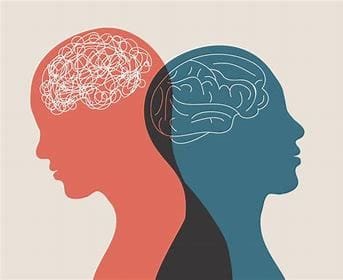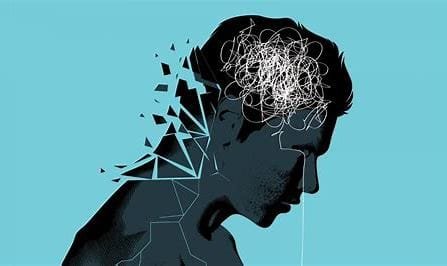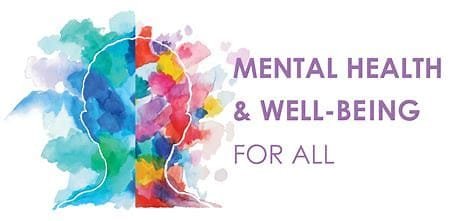Positive thinking has become one of the powerful tools for healing mental faculties and improving an individual’s well-being. The notion behind that seems too simplistic to be true, but adopting a positive attitude has its profound implications on the mind and body, as well as on various social interactions. It can alter our perception and create a balance in between doing good and bad, and it also reflects resilience. In a time of stress and mental fatigue, the importance of positive thinking cannot be overstated. This article seeks to cover the major aspects of positive thinking and then demonstrate how it affects the mind—the primary foundation for a happier and more fulfilled life.

What is positive thinking?
Positive thinking is the practice of paying attention to the bright side of any issue, admitting problems without allowing them to take over your mind. It portrays optimism, self-affirmation, and dissociation from anything negative. A positive mindset does not mask problems or keep living happily ever after; it is rather a choice to view situations constructively. Problems are opportunities for change, so in turn, they are potential places for growth that most likely spring positive thinkers on the way.
The Psychological Impact of Positive Thinking
The human brain is more attuned to negativity than to positivity; it’s called “negativity bias.” It proved useful in early human life when threats were many and had to be identified and countered as quickly as possible. However, in the contemporary world, threats are commonly emotional or psychological and tend to cause chronic stress and anxiety. Positive thinking acts as an antidote for this sort of tendency, which shields it from damage caused by stress.
Research showed that a positive mind improves psychological resilience. With positivity, they can face negative circumstances more willingly. A positive mindset helps build more problem-solving abilities and creative thinking. It means that people are better out and clearly in less emotional mess when facing problems. Optimism helps instill a sense of self-efficacy—the belief that you are able to achieve your goals and overcome impediments—which is so very key to psychological resilience.
The Physical Advantages of Positive Thinking
The mind and body are closely linked, and the influence of positive thinking transcends mental health into physical health. Positive thinkers tend to have fewer chances of developing conditions such as hypertension, heart disease, or even some types of cancer. A positive thinker has a stronger immune system, so he is better protected against illness.
One of the main reasons for such physical benefits is that positive thinking decreases levels of stress. When we have a positive outlook, then levels of what is actually called the stress hormone are produced at much lower levels. Chronic stress increases levels of that, and it can damage the body, affecting things like weight gain, impaired cognitive activity, and weakened immune responses. Positive thinking therefore reduces some of that stress and, in doing so, contributes to healthier living in general.
Besides, a sound attitude develops wholesome habits. Healthy habits are actually more active in participating in exercises regularly, eating a healthy diet, and going to bed early—the important practices toward maintaining good physical health. It is the motivation to take care of the body, or healthier living, that arises from a positive attitude about life and one’s future.
Key Determinants of Positive Thinking

Gratitude:
Perhaps the most effective method is that of gratitude. When one is able to take the time to reflect on what one appreciates, one’s focus shifts from what lacks in life to what abundantly thrives. In fact, keeping a gratitude journal has been shown to have immense benefits, including improvement of emotional well-being and the creation of a more positive outlook.
Self-Affirmation:
Often times, the positive thinking is replete with self-affirmation or the reinforcement of positive beliefs about oneself. That can counterbalance the negative dialogue most people face, especially during stressful moments or when a person fails. Even simple sayings like “I am capable” or “I can handle this” have a specific impact on the way we approach challenges.
Mindfulness and Meditation:
Mindfulness is the state of being present in the moment while observing thoughts without judgment. The important factor in this context is that an individual becomes aware of the negative patterns of thinking and replaces them with a more constructive pattern of thinking. Particularly with meditation, there has been enhanced positive thinking that derives greater awareness of the present while creating a reduction in anxiety about the future.
Visualizing:
One other very good tool that contributes to producing positive thinking is visualizing. When you envision success and positive ends, you condition your brain to think in terms of possibilities rather than limitations. It breeds confidence and discourages the fear of failure because it helps develop a mentality where positivity thrives.
Surround yourself with positivity.
The people you surround yourself with shape your thoughts. For example, positive people can influence your mindset, whereas negative people inform it constantly to be more pessimistic. Therefore, surround yourself with people whose influence is very positive toward you and help in a positive outlook on life.
Positive Self-Talk:
Use positive vocabulary. If you keep getting stuck with a challenge, do not say “I can’t” or “It’s too tough.” Instead, use words that empower you by saying “I will try” or “This is challenging, but I can learn something from this.” Eventually, this style of expression might evolve into an even more resolute and optimistic mindset.
The Broaden-and-Build Theory
The most familiar of the psychological theories on positive thinking is the Broaden-and-Build Theory, designed by psychologist Barbara Fredrickson. It suggests that positive emotion broadens our scope of awareness and prompts new, diverse, exploratory thought and action. Over time, such expanded horizons build sustained personal resources such as resilience, relationships, and knowledge. Negative emotions, on the other hand, narrow our attention and limit our potential for creative thinking or seeing beyond the confines of the issue at hand.
The ripple effect of positive thinking
Healthy thinking positively impacts not only the individual but others as well. Good thinking is indeed contagious; positive thinkers and practitioners tend to encourage others to become a part of this way of thinking and behaving. In interpersonal relationships at home, at work, and even at the neighborhood level, positivity fosters cooperation, respect, and mental care for each other. This is a cycle where more positivity begets more positivity, thus boosting and uplifting the psychological well-being of social circles in general.
Conclusion

Positive thinking is much more than just self-help jargon; it is a science-based approach to mental and physical well-being, resilience, and quality of life. Gratitude, self-affirmation, and mindfulness of experiences around oneself train the mind to think more positively.
The outcome is a happier, healthier life with clear strength when challenges must be met. Positive thoughts are not fleeting emotions but truly transformative forces that shape the lives we live.



